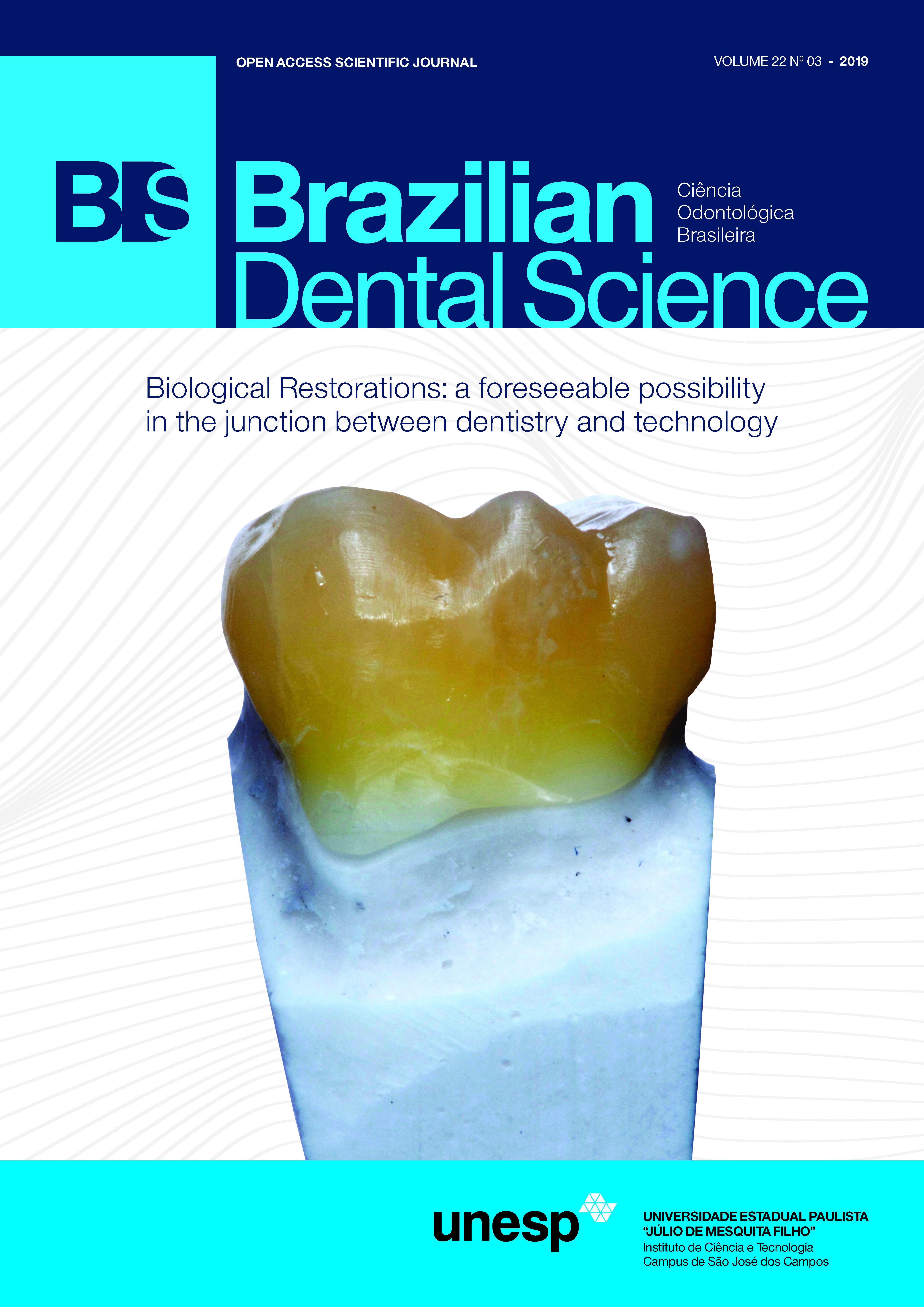Evaluation of wettability characteristics and adhesion of resin composite to photo-polymerized pulp-capping materials with and without bioactive glass
DOI:
https://doi.org/10.14295/bds.2019.v22i3.1703Resumo
Objective: The purpose of this study was to evaluate mechanical and physical properties of three different light-curable resin-based materials (TheraCal LC, Biner LC, and CalciPlus LC) with or without BAG. Material and Methods: 15 cylindrically shaped specimens (n=5) were prepared for contact angle test. The test values (?) were determined with the sessile drop method using three test liquids. 30 acrylic cylindrical blocks were prepared, and holes of (6mmx1mm) were made in the center of the cylinders for shear bond strength test. An adhesive system and a restorative composite material were applied via cylindrically shaped plastic tubes of (2mmx2mm) at the center of the light-curable resin-based material surfaces. The specimens were mounted in a universal testing machine. A crosshead speed of 1 mm/min was applied to each specimen using a knife-edge blade. Results: The highest (74.77°±13.56) and the lowest (35.35°±12.89) contact angle values were recorded for the MB Biner LC group and the CalciPlus LC, respectively. Statistically significant differences observed in contact angle values between the test groups (p<0.05). The surface free energy of Biner LC (?S 36.22) was lower than that of TheraCal LC (?S 44.70) and CalciPlus LC (?S 46.20) (p<0.05). There was no significant difference in shear bond strength values between TheraCal LC and CalciPlus LC (p>0.05). Conclusions: Hydrophilic property of Theracal LC and Calciplus LC resulted in better bonding strength in these materials. The BAG used in Calciplus LC did not adversely affect mechanical and surface properties of the material.
Downloads
Downloads
Arquivos adicionais
Publicado
Como Citar
Edição
Seção
Licença
TRANSFERÊNCIA DE DIREITOS AUTORAIS E DECLARAÇÃO DE RESPONSABILIDADE
Toda a propriedade de direitos autorais do artigo "____________________________________________________________________" é transferido do autor(es) para a CIÊNCIA ODONTOLÓGICA BRASILEIRA, no caso do trabalho ser publicado. O artigo não foi publicado em outro lugar e não foi submetido simultaneamente para publicação em outra revista.
Vimos por meio deste, atestar que trabalho é original e não apresenta dados manipulados, fraude ou plágio. Fizemos contribuição científica significativa para o estudo e estamos cientes dos dados apresentados e de acordo com a versão final do artigo. Assumimos total responsabilidade pelos aspectos éticos do estudo.
Este texto deve ser impresso e assinado por todos os autores. A versão digitalizada deverá ser apresentada como arquivo suplementar durante o processo de submissão.




























